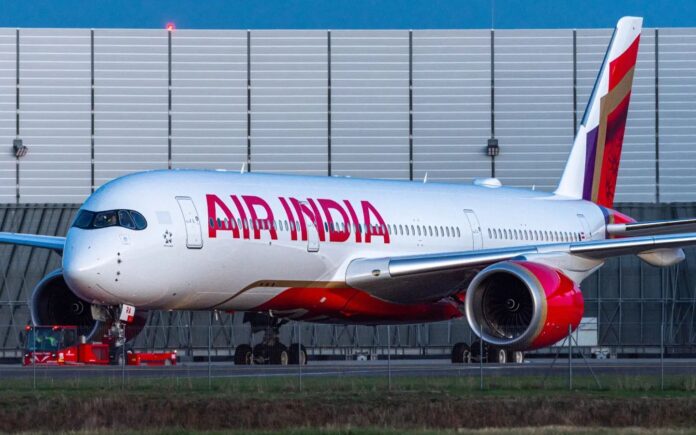Background:
Air India, a symbol of Indian aviation for decades, has been grappling with financial woes, operational inefficiencies, and stiff competition. The decision to return Air India to the Tata Group, where it originally began its journey in 1932, is seen as a strategic move to breathe new life into the struggling airline.
Loss-making Air India faced insurmountable challenges, ultimately leading to its shutdown. The airline, burdened with a debt of Rs 61,562 crore as of August 31, 2021, succumbed to a combination of financial mismanagement, corruption, and political intervention.
Corruption and Political Interference:-
Jitender Bhargava’s book, “Descent of Air India,” sheds light on the airline’s demise, attributing it to corruption and political meddling. From the unceremonious nationalization by Jawaharlal Nehru to subsequent decades, the airline suffered from the rot that set in, leading to substantial losses.
- JRD Tata’s warnings about the airline’s direction were ignored.
- Tough chairmen and directors who sought to cut losses were punished by the political establishment.
- Removal and victimization of officials like V Subramanian and Sunil Arora for raising objections and questioning decisions.
Financial Mismanagement and Debt Accumulation:-
Air India’s financial troubles were exacerbated by poor management and inadequate cost controls, resulting in the accumulation of a massive debt.
- Inefficient fleet acquisition decisions under Praful Patel in 2004.
- Removal of officials who opposed detrimental policies, hindering financial recovery.
Labor Unrest and Inefficient Operations:-
The airline faced frequent labor strikes and disputes, disrupting services and making workforce reforms challenging.
- Ineffective route planning and network management.
- Inability to adapt to changing industry dynamics and fierce competition.
Aging Fleet and Maintenance Challenges:
Operational inefficiencies were exacerbated by an aging fleet, requiring higher maintenance costs and technological upgrades.
- Challenges in keeping the fleet technologically updated.
Customer Service Issues and Lack of Innovation:-
Air India’s reputation suffered due to poor customer service and a failure to innovate in response to changing passenger preferences.
- Insufficient investment in technology and innovation.
- Failure to enhance the overall customer experience.
Government Subsidies and Bailouts:-
The airline relied on government subsidies and bailouts, hampering its ability to operate independently in a competitive market.
Tata Group Set to Revitalize Air India after rewon from Government of INDIA
In a landmark decision, the Government of India has officially handed over the reins of the national carrier, Air India, to the Tata Group. The move marks a significant shift in the aviation sector, bringing a renowned private entity back into the fold to rejuvenate the airline that has faced financial challenges for years.
Strategic Vision:-
Under the leadership of Tata Sons, the conglomerate is expected to bring its strategic acumen and financial strength to bear in revitalizing Air India. Analysts anticipate a comprehensive overhaul of the airline’s operations, including fleet management, route optimization, and cost restructuring.
Ratan Tata, the Chairman Emeritus of Tata Sons, expressed his enthusiasm for the challenge, stating, “Air India holds a special place in the hearts of Indians, and we are committed to restoring its glory. Our focus will be on enhancing customer experience, streamlining operations, and ensuring financial sustainability.”
Customer-Centric Approach:-
One of the key areas of transformation is expected to be a renewed emphasis on customer satisfaction. The Tata Group, known for its customer-centric approach across various industries, is likely to implement measures to enhance passenger experience, from booking to in-flight services.
Fleet Modernization:-
A critical aspect of the revival plan involves upgrading and modernizing the airline’s fleet. Industry experts anticipate significant investments in acquiring fuel-efficient and environmentally friendly aircraft, aligning with global aviation trends.
Operational Efficiency:
Streamlining operations is paramount for the success of Air India’s revival. The Tata Group is expected to leverage its corporate expertise to enhance operational efficiency, optimize routes, and negotiate more favorable agreements with suppliers.
Job Creation and Skill Development:-
As part of the restructuring, the Tata Group has committed to job creation and skill development within the aviation sector. This move aligns with the government’s broader vision of boosting employment opportunities and fostering skill development in the country.
Challenges Ahead:-
While the transfer to the Tata Group holds immense promise, challenges loom on the horizon. The airline industry, globally affected by the ongoing economic uncertainties and the aftermath of the pandemic, presents a formidable backdrop. The Tata Group will need to navigate these challenges with resilience and innovation.
Conclusion:-
The return of Air India to the Tata Group signifies a new chapter for the national carrier. The government’s decision reflects a belief in the private sector’s ability to infuse vitality and competitiveness into the aviation industry. As the Tata Group takes the helm, all eyes will be on the transformation ahead, with hopes high for a revived and thriving Air India.
Follow US on:- https://www.linkedin.com/company/aero-hub-india/






